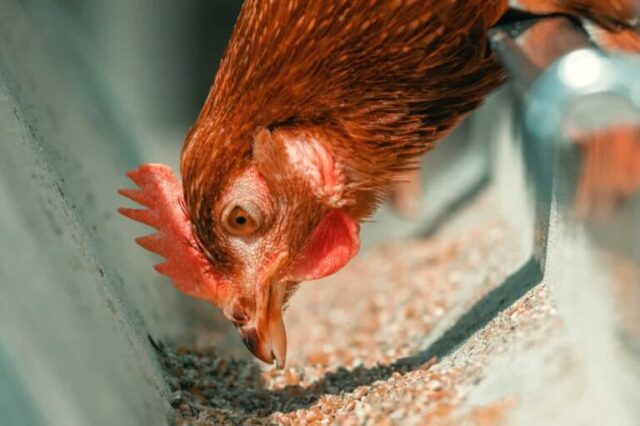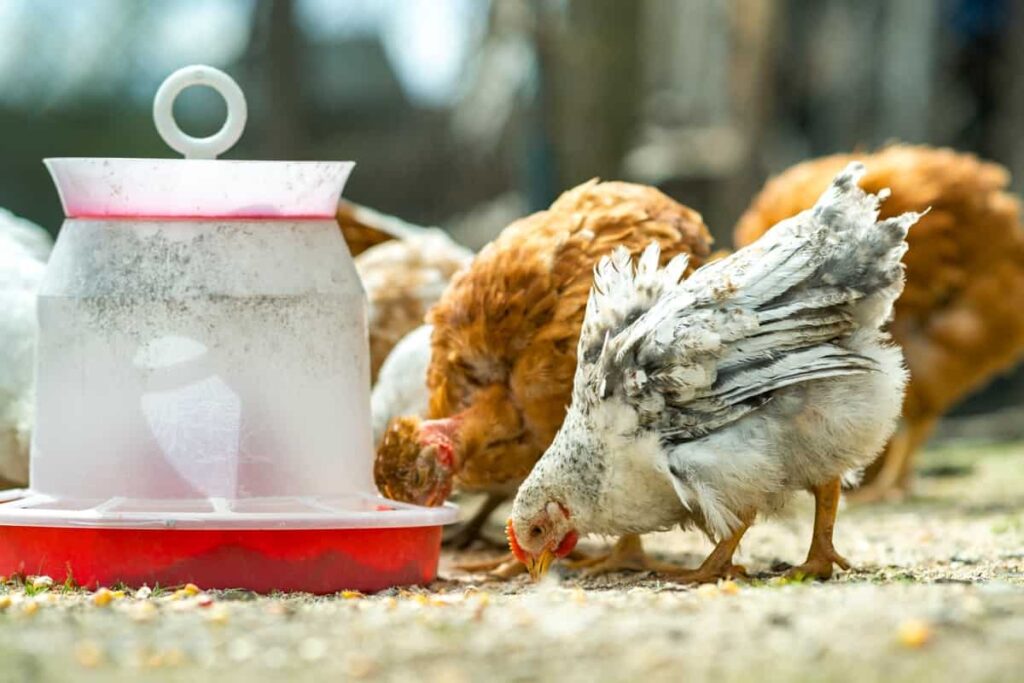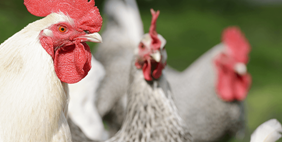
Rising Poultry Feed Costs: Strategies for Cost Control
The poultry industry, an essential component of global food production, has always faced challenges. From disease outbreaks to regulatory changes, farmers are no strangers to adversity. However, in recent years, one issue has come to the forefront more than ever before: the skyrocketing cost of poultry feed. For farmers, this rising expense has become a significant concern, threatening profitability and even the sustainability of their operations. As feed typically represents up to 70% of the total cost of poultry production, understanding the factors driving this increase and exploring practical strategies to control costs is crucial for the future of the industry.

The Root Causes of Rising Feed Costs
To address the rising cost of poultry feed, it’s essential to first understand what’s driving the increase. Several key factors contribute to the pressure on feed prices:
1. Supply Chain Disruptions The global supply chain has been under strain for years, exacerbated by the COVID-19 pandemic, geopolitical tensions, and climate-related disruptions. Grain and other essential feed ingredients like maize, soybeans, and wheat are sourced from various parts of the world. When these supply chains are interrupted—whether due to natural disasters, export restrictions, or transportation bottlenecks—feed prices can increase sharply.
2. Climate Change Unpredictable weather patterns, droughts, and floods are becoming more frequent and intense due to climate change. These climate extremes impact crop yields and availability, leading to higher prices for key feed ingredients. For example, a drought in the United States or South America can significantly reduce the production of maize, a staple in poultry feed, driving up costs globally.
3. Increased Global Demand for Animal Protein As global populations rise and dietary preferences shift towards more animal-based protein, the demand for poultry products continues to grow. This increased demand, coupled with limited feed resources, puts upward pressure on prices.
4. Fuel Prices Feed production and transportation rely heavily on energy. Fluctuations in global oil prices can affect the cost of manufacturing and transporting poultry feed. As fuel prices rise, so does the cost of getting feed to farms, further increasing expenses.
5. Biofuels and Competing Uses of Grains In many parts of the world, grains that were once primarily used for animal feed are now being diverted toward biofuels and other industries. The competition for grains between the biofuel industry and livestock sectors creates market instability, further driving up feed prices.
Impact of Rising Feed Costs on Poultry Farmers
The increased cost of feed directly impacts poultry farmers, who face slimmer profit margins as a result. For small- and medium-scale farmers, particularly those in developing countries, the higher cost of feed can be a significant threat to their livelihood. For large-scale commercial poultry operations, rising feed costs may require adjustments to pricing, production methods, or even the choice of feed types, all of which affect the bottom line.
Farmers are under pressure to produce more with less, balancing the health and welfare of their flocks with the need to remain profitable. Some may reduce the quality or quantity of feed provided to poultry, but this can lead to negative effects on the health and productivity of the birds, compounding the issue. The ultimate challenge for poultry farmers is finding ways to control feed costs while maintaining a high standard of animal welfare and production efficiency.

Strategies for Controlling Poultry Feed Costs
While the rising cost of poultry feed is largely outside the control of farmers, there are several effective strategies that can help mitigate its impact. By adopting a more strategic approach to feed management, farmers can maintain profitability and improve the sustainability of their operations.
1. Optimize Feed Formulation
One of the most effective ways to control feed costs is to optimize feed formulations. By carefully balancing the nutrients in poultry feed and ensuring that each bird receives the exact amount of protein, carbohydrates, vitamins, and minerals needed, farmers can reduce waste and improve feed efficiency. The use of precision feeding systems, supported by AI and automation, can help in this regard by analyzing individual birds’ needs and adjusting the feed composition accordingly.
Customizing feed based on the specific requirements of different types of poultry—layers, broilers, or breeders—can further reduce feed waste. For example, adjusting the protein content of the feed based on the birds’ age and growth stage helps maximize feed conversion, allowing poultry to grow efficiently while minimizing excess feed costs.
2. Incorporate Alternative Feed Ingredients
With the rising prices of traditional feed ingredients like corn and soybeans, many farmers are looking at alternative sources of nutrition. The use of alternative feed ingredients not only helps reduce costs but also contributes to more sustainable farming practices.
1. Insects: Black soldier fly larvae, mealworms, and other insects are gaining popularity as high-protein alternatives to soybeans and fishmeal. These insects are rich in protein and fats, and they can be farmed sustainably on organic waste, providing a circular, eco-friendly solution to feed production.
2. Agri-Byproducts: Various agricultural byproducts, such as distillers’ grains, rice bran, and wheat bran, can be used to supplement poultry diets. These byproducts often come at a lower cost than traditional feed ingredients and may offer comparable nutritional value when properly processed.
3. Seaweed and Algae: Seaweed and algae have been shown to offer valuable nutrients, such as omega-3 fatty acids, vitamins, and minerals, that can enhance poultry health and productivity. Incorporating these into poultry diets can lower feed costs and provide additional health benefits for the birds.
By diversifying the feed mix and incorporating these alternative ingredients, farmers can cushion themselves from the volatility of traditional feed markets and reduce their overall feed expenditure.
3. Implement Feed Storage and Handling Best Practices
Improper storage and handling of feed can lead to significant losses, driving up overall feed costs. Ensuring that feed is stored in cool, dry conditions helps prevent spoilage, mold growth, and nutrient degradation. Regular cleaning of feed storage areas and proper sealing of feed containers also helps maintain feed quality and prevents wastage.
Furthermore, improving feed handling practices can reduce spillage during distribution and feeding, ensuring that the maximum amount of feed reaches the birds. The use of automated feeders that distribute feed precisely and consistently can help optimize feed consumption and minimize waste.
4. Improve Feed Conversion Efficiency
A critical factor in controlling feed costs is improving the feed conversion ratio (FCR)—the amount of feed needed for poultry to gain a certain amount of weight. The more efficiently birds convert feed into body mass, the less feed they require. Several strategies can help improve FCR:
- Proper housing and environmental management: Ensuring optimal conditions for poultry, such as maintaining comfortable temperatures, humidity levels, and ventilation, helps reduce stress and encourages better feed conversion.
- Health and biosecurity management: Healthy birds are more likely to have efficient feed conversion. Regular health checks, vaccinations, and proper biosecurity practices reduce the risk of disease, allowing the birds to grow more efficiently.
Additionally, genetic selection of poultry breeds with better feed conversion rates can help reduce long-term feed costs and increase production efficiency.
5. Bulk Purchasing and Group Buying
Poultry farmers can also reduce feed costs by purchasing feed ingredients or complete feed in bulk. Bulk buying lowers the per-unit cost of feed, especially when buying in large quantities directly from suppliers or mills. For smaller-scale farmers, joining cooperatives or group-buying arrangements can also provide access to better pricing on feed.
Working directly with feed suppliers to negotiate pricing based on long-term contracts or forecasting feed needs can provide a more stable cost structure. In some cases, suppliers may offer discounted prices or incentives for larger orders.
In conclusion
The rising cost of poultry feed is a significant challenge for farmers, but it is not insurmountable. By optimizing feed formulations, incorporating alternative ingredients, improving feed management practices, and focusing on efficiency, farmers can reduce feed-related costs without sacrificing the health and welfare of their birds. In an increasingly volatile market, proactive and strategic planning will be essential for poultry farmers to maintain profitability and ensure the long-term sustainability of their operations.
As the poultry industry faces growing pressure to balance cost control with production efficiency, embracing these innovative strategies and adapting to changing conditions will be key to navigating the complexities of rising feed costs. By doing so, farmers can continue to provide high-quality poultry products to meet global demand while safeguarding their businesses’ futures.


















